8.1 WHERE ARE WE GOING
WHERE is ART GOING NOW?
Xu Bing
Pioneering Chinese contemporary artist Xu Bing (1955- ) was born in Chongqing, China and grew up in Beijing. His love of books and the written word came from his mother who was a researcher at Peking University and his father who was the head of the history department there. In 1975 he was sent to the countryside on the outskirts of Beijing as part of Mao Zedong’s Cultural Revolution. For two years he painted banners and other propaganda messages and he learned to appreciate Chinese characters and how they could be manipulated for political reasons. At the end of his time there he enrolled in the CAFA (Central Academy of Fine Arts) where he eventually became a professor. Some of his earliest works were censured by the Chinese government. This exposure to calligraphy, books, and the written work became important aspects of his later art.

One of his first works of art was Book From the Sky. It is made of more than 4,000 characters which look like Chinese words, but are actually characters he invented. They may look real, but they do not convey meaning and they are useless. Like the governmental messages of the Cultural Revolution, they are nonsensical. The ceiling of his exhibition is draped with cloud like scrolls; the walls are covered with meaningless text, and the floor seems like waves of water covered with useless words. The installation space is set up to be peaceful and calming, but when the viewer realizes that it is all a trick and it has no meaning, the space is no longer calm, but bewildering. Amazingly each of the 4,000 glyphs is hand carved and then used to print the text on beautiful rice paper. So much care was taken to create the work, and yet it has no value. Bing’s work forces the viewer to re-evaluate the relationship between ideas and the written words we use to convey our ideas. The installation was only open for a few days, and it was then shut down by the Chinese government for its liberalism.
In 1990 protestors for Democracy demonstrated in Tiananmen Square with up to a million people protesting against the Chinese government. Since Bing had already been criticized by the government for his radical bourgeois ideas, he and his family decided to leave China and move to the United States. They were invited to the University of Wisconsin-Madison, but Bing eventually moved to New York City. Bing returned to work in China in 2008, where he had to relearn how to be Chinese. The atmosphere and attitudes had changed, and he now felt he could return to teach at the CAFA, and give his students insight to the traditional as well as the modern ideas that he thought were important now. He is one of China’s best known artists and is leading the way for younger students to experiment with new ideas.
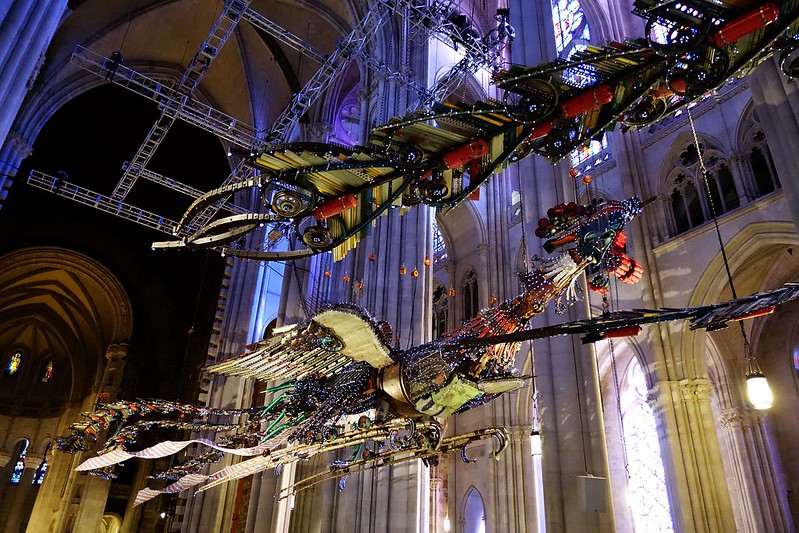
Xu Bing visited construction sites in urban China and was appalled by the treatment of the migrant workers being used to build the modern buildings, which the workers would never be able to use. He had been asked to work on a glass atrium for a site, but instead he decided to use the leftover debris from the site to build two gigantic birds. The male bird, Feng, is 90 feet long and the female bird, Huang in 100 feet long. They are made of steel beams, tools, pipes, gears, and leftover safety gear and weigh more than twelve tons. The image above shows the two birds installed in the Cathedral Church of St. John the Divine in New York City in 2014. His birds are a social/political statement about the waste of modern construction methods and the treatment of migrant workers who are brought in to do the job and then sent on their way.
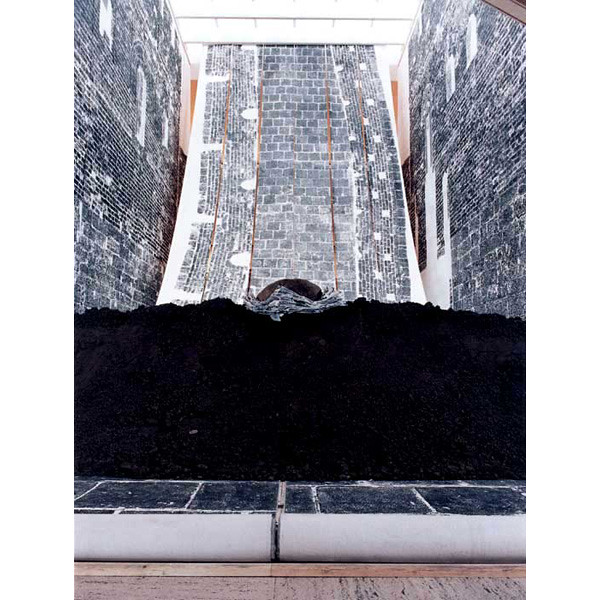
Bing created Ghosts Pounding the Wall with the help of a team of art students who helped him make rubbings from the Great Wall of China in Jinshanling. They used traditional Chinese methods to create 29 rubbings using ink on rice paper. The “words” rise high on the walls of the display area and seem to cascade downward as though to overwhelm the viewer. This was a political statement about the close minded Chinese government and their isolationist policies that have kept them out of the international world view.
Maya Lin
Maya Lin (1959-) was born in Athens, Ohio and attended Yale University. Her parents had migrated from China in the late 1940s and she did not feel like she was part of the Chinese culture. While still an undergraduate at Yale she submitted a design to the national competition for a planned Vietnam Veteran’s Memorial in Washington, D.C., and surprisingly, she won. When it was first built the monument was controversial because it did not contain bronze figures of war heroes. Eventually it became very popular with the public and the controversy has subsided. The memorial contains the names of the service men and women who died in the war. The shape of the memorial is dictated by the number of people who died each year, and it grows taller as the list increases. Young and old come to it to find their family members and friends, to take rubbings of their names, and to find some closure.
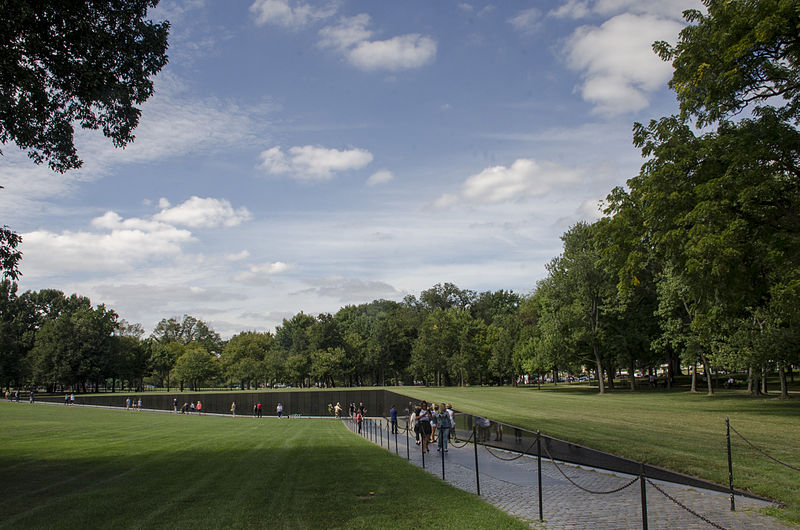
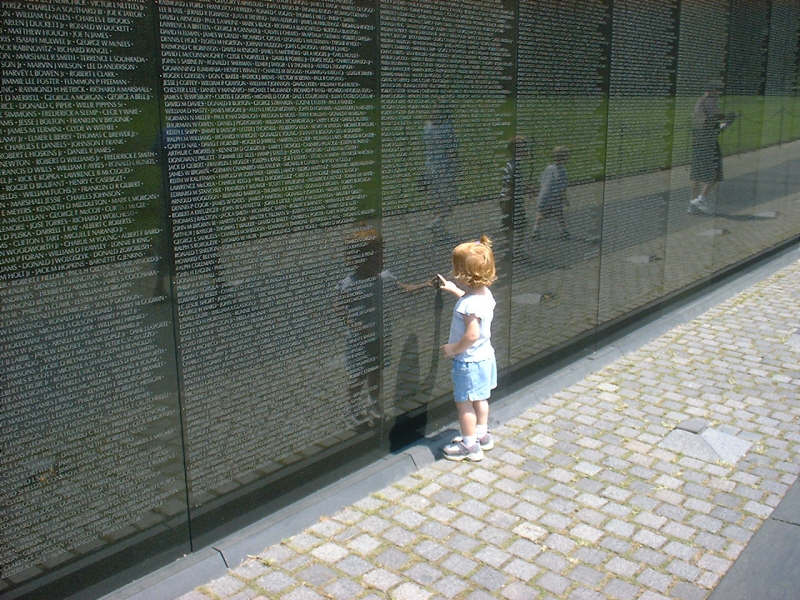
Maya Lin, Vietnam Veterans Memorial 7:13
If you receive an error with the link above, use the following link https://www.khanacademy.org/humanities/ap-art-history/global-contemporary-apah/20th-century-apah/v/mayalin-vietnamvetmem?modal=1
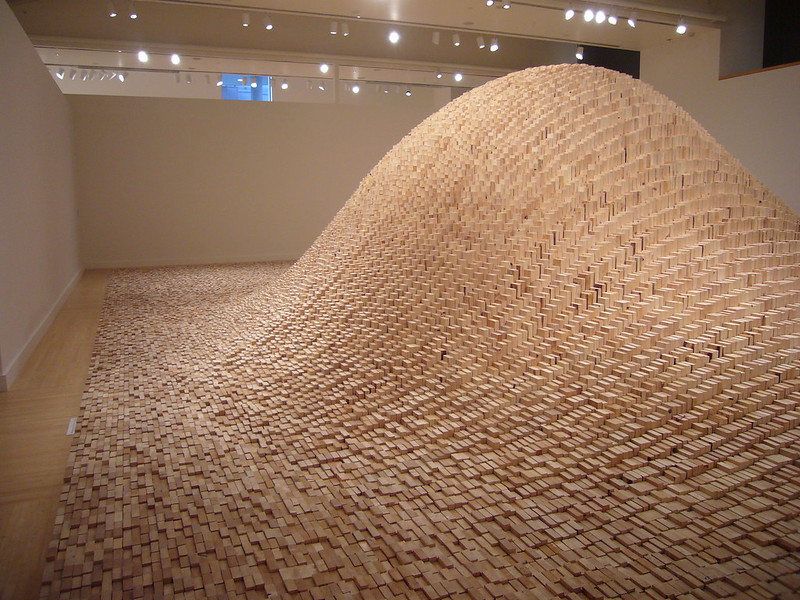
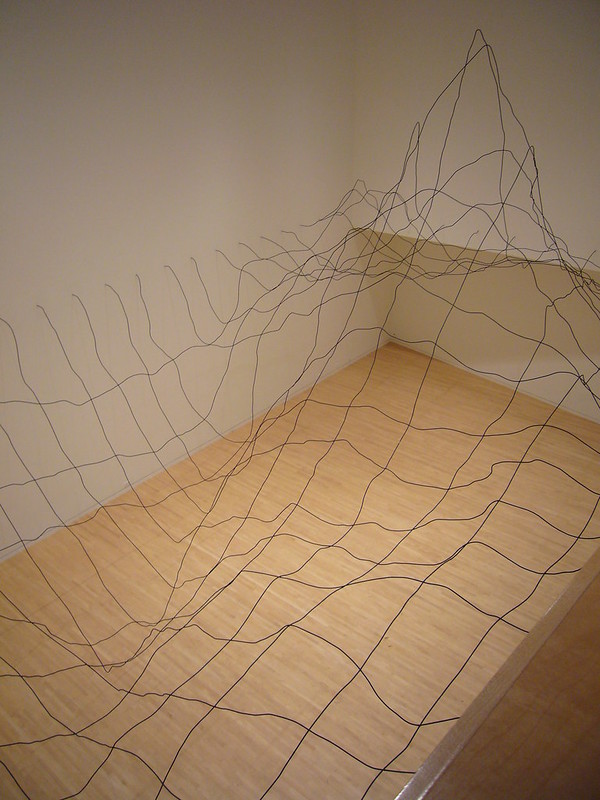
Lin’s Landscape 2×4 and Water Line are two of a three part sculptural installations which engage the viewer and offer multiple ways to look at the land around them. 2×4 Landscape could be a mound of earth or a wave in the ocean, and either version gives the viewer another way to view their world. Water line shows computer mapping of the sea floor in the South Atlantic near Antarctica, which Lin then made using wire. Of course these works also fit into the Conceptual Art category, and they are also the face of art in the twenty first century.
Glenna Goodacre
Glenna Goodacre (1939-2020) was born in Texas, graduated from The Colorado College in Colorado Springs, and studied at the Art Students League in New York City. She most often works in bronze and is well known for the Vietnam Women’s Memorial in Washington D.C. and for the design of the Sacagawea dollar coin. She moved to Santa Fe, New Mexico in 1983. The Vietnam Women’s Memorial is dedicated to the women of the United States who served in military hospitals, as air traffic controllers, and other capacities in the Vietnam War. There is controversy about it because at that time women only served behind the front lines and this is not depicted in ner sculpture in Washington.
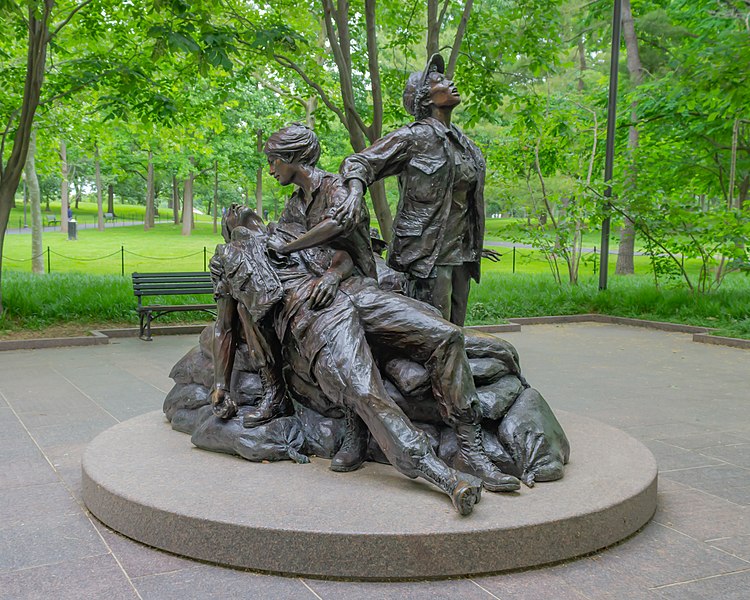
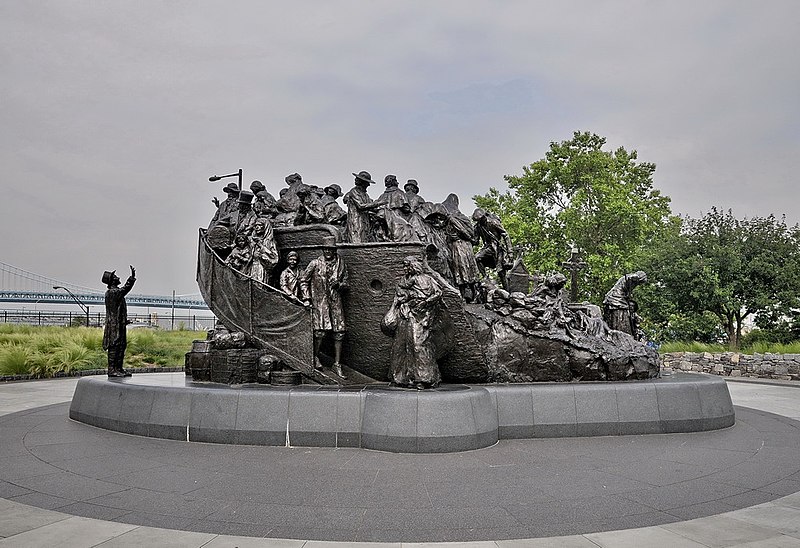
She is also known for The Irish Memorial, also called An Gorta Mor, which was created as a memorial to the one million Irish men, women and children who died in the great potato blight which caused famine from 1845 to 1850. Part of the reason for the famine was that unscrupulous profiteers exported the available grain to sell abroad instead of using it to feed the hungry poor of Ireland. Another million people immigrated to the United States because of the famine, and this sculpture is made to commemorate their entry at the Port of Philadelphia, having left behind all they had to make a new start. There are 35 full life sculptures shown leaving Ireland, living on board a ship, mourning their deceased family members, and arriving in America.
The Immersive Van Gogh Experience
A new way to experience art is in an immersive installation. The Van Gogh Experience was put together by a group of people including Director David Korins, Creator Massimiliano Siccardi; Composer Luca Longobardi and Art Director Vittorio Guidotti. It first opened at the 70,000 square foot facility at Pier 36 in Manhattan, New York, and was then replicated many times in venues throughout the world. Korins, who also designed the set for the hit Broadway musical Hamilton, opened the installation in June of 2020, just as the COVID-19 pandemic was beginning to lift. Longobardi composed music to accompany more than 60,000 frames of 40 video images of Van Gogh’s art works. The images are projected onto walls, ceilings floors, and glass pyramids, and the participants see their shadows within the paintings and the paintings projected onto their bodies.

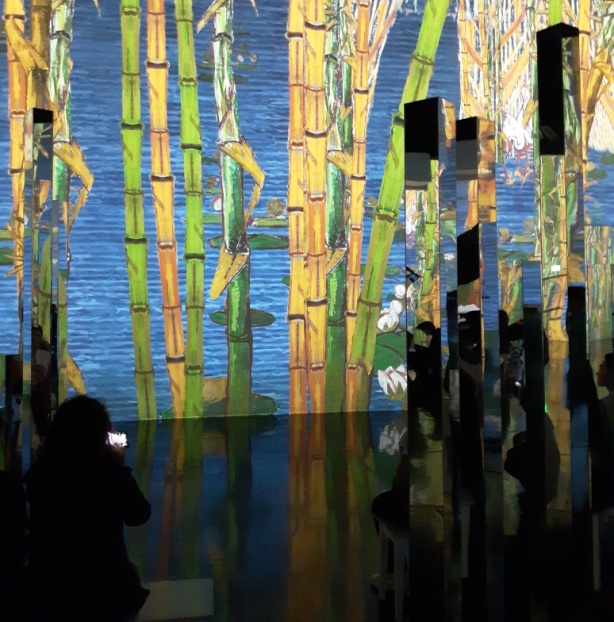


Luca Longobardi, who composed the score for the Van Gogh Exhibit explains his ideas this way: “Immersive art is a very complex concept; it’s not just a technical way to represent A/V in huge spaces. The word “immersive” indicates a deep engagement of intentions that connect images and sound so that the audience may be able to experience a different perception of art. The music should not “overpower” the images but, on the contrary, should allow for a different, more personal and intimate yet collective approach. For example, the soundtrack assembled for Immersive Van Gogh Exhibit develops following two main narrative concepts: the human and emotional condition of the artist and his way of expressing his sensitivity through creative action. The clear image of Van Gogh is that he often looks for understanding in other artists, even if he ends up finding solitude as the only possible condition – both in a positive and negative sense – and this is the constant that links the two concepts.11
Zaha Hadid
Zaha Hadid (1950-9016) was an important architect that gave new vision to 21st century architecture. Born in Baghdad, Iraq, she studied math at the American University of Beirut and then moved to London in 1972. She consistently won prizes for her innovative and beautiful buildings. Her math backgrounds led her to envision aggressive geometric buildings, although many of them were on paper only and were not built. Some of the drawings for her proposed buildings were art works in themselves and were put on display in art museums. It is amazing that Zaha made such an impact on architecture, considering that most architects are men and she had to navigate in a man’s world.
The Heydar Aliyev in Baku, Republic of Azerbaijan was built between 2007 and 2014 and was intended to house the nation’s cultural programs. It is much different from the normal Soviet architecture in the country is an attempt to propel Azerbaijan toward a place in the future.

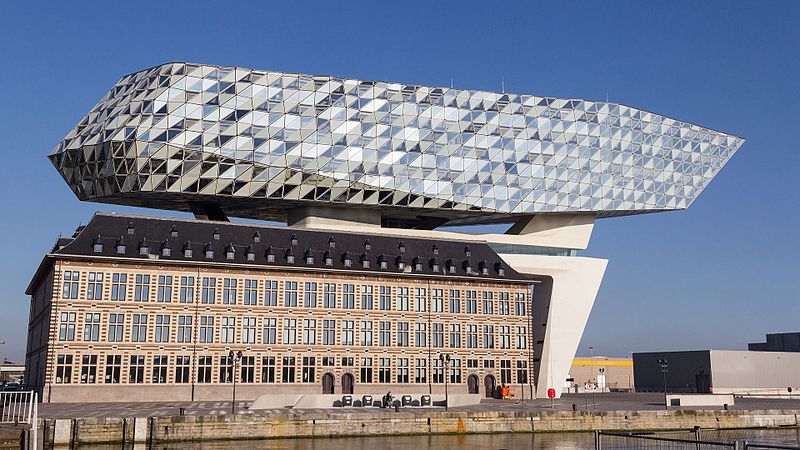
The new addition to the Antwerp Port House was built above the existing fire house and it rests on the roof, connected by columns. The façade is made of glass panels, giving the 500 employees who work there a 360 degree view of the harbor and the public spaces below. The new section of the building resembles a large grasshopper or a bird that has just landed atop the building, although it was meant to look like the hull of a ship.
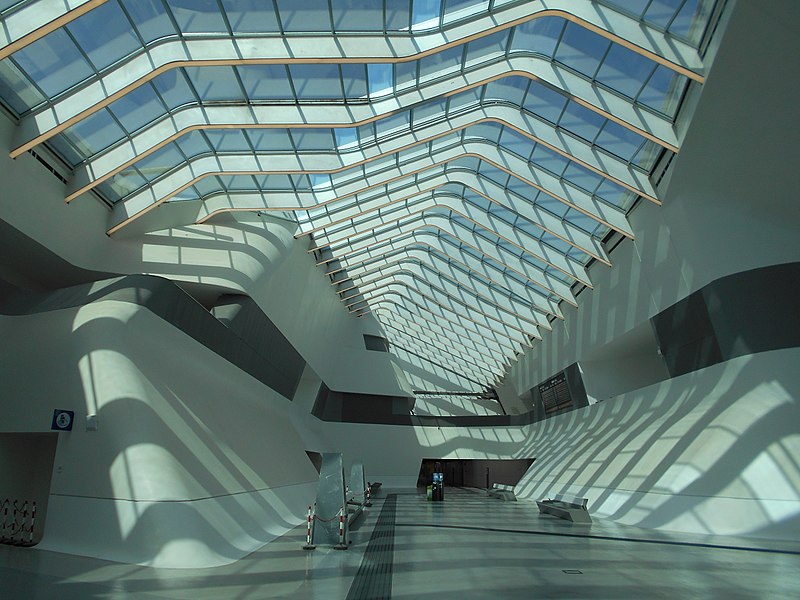
Hadid also designed and built the station for the high speed train in Naples, Italy. Its flowing lines draw the visitor forward, like the movement of the train will do. The light streams in from the glass overhead and creates moving patterns below as the sun moves overhead.
Who is to say where art will go in the future. More discretionary income, more sophisticated art connoisseurs, freedom from political dictatorship, new materials and techniques and technology are all factors in the new types of art and architecture on the horizon. Gone are the days where the church or the king or the tribe told the artist what to make. And with that comes a greater difficulty paying for works of art. Today young people who discover they have artistic talent must find a way to “make a living” so they can have some time to create. Most artists do not have thousands of hours to spend making gold leafed tesserae for mosaics or intricate carvings. Xu Bing enlisted the help of university students to do his rubbings. Maybe collective art is the way of the future.

